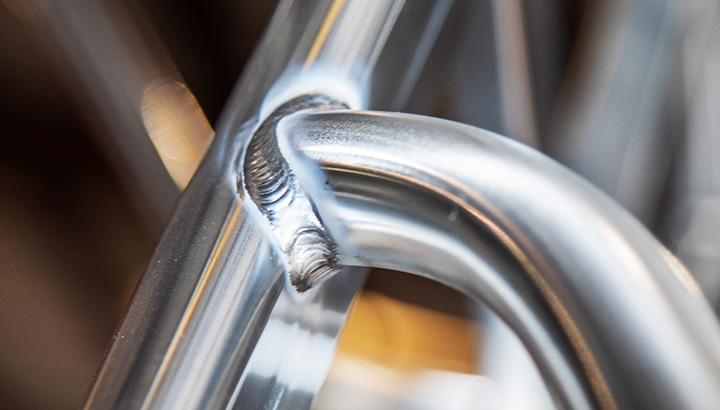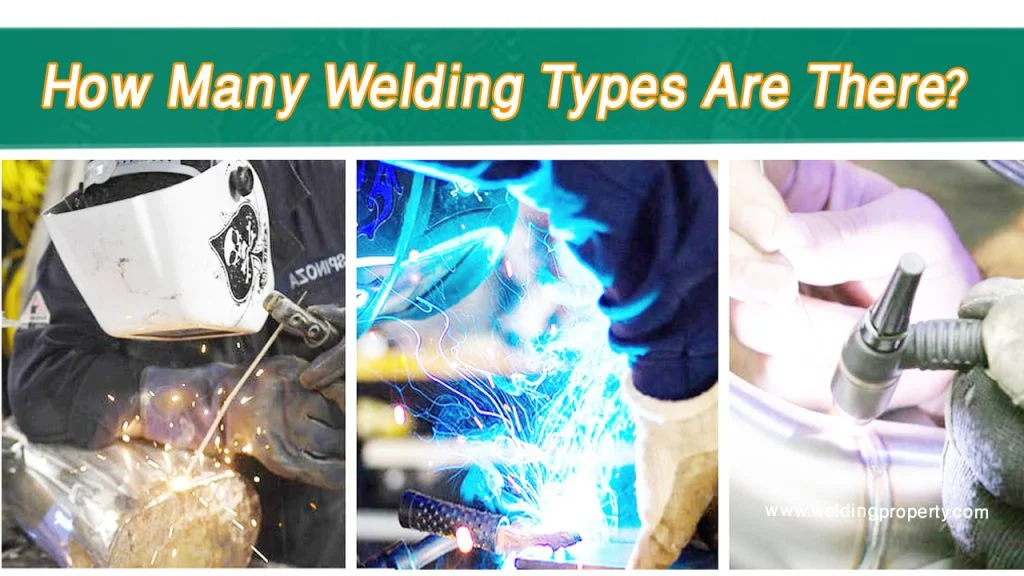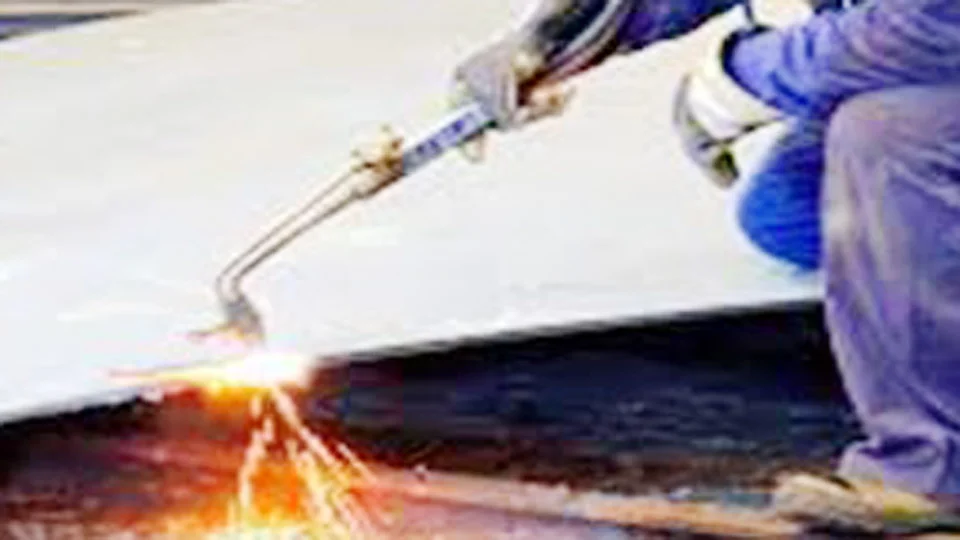Welding aluminum can be tricky. Choosing the right method is crucial.
Aluminum is a popular metal in many industries due to its lightweight and strength. But its unique properties require special care during welding. Different welding methods can impact the final product’s quality and durability. Whether you’re a professional welder or a hobbyist, understanding the best techniques for aluminum welding is essential.
This guide will help you navigate the options and find the most effective method for your project. From TIG to MIG welding, each method has its pros and cons. We’ll break down the specifics to ensure your next aluminum welding project is a success. Dive in to discover which welding method suits your needs best.

Credit: m.youtube.com
Introduction To Aluminum Welding
Aluminum welding is a specialized technique. It requires specific skills and equipment. Aluminum is different from other metals. It’s lightweight and has high corrosion resistance. These properties make it popular in many industries.
Importance Of Aluminum Welding
Welding aluminum is important. It allows for strong and durable joints. This is crucial in manufacturing and construction. The metal’s lightweight nature helps reduce overall weight. This is beneficial in transportation and aerospace industries. Proper welding ensures the integrity of structures. It also helps in maintaining safety standards.
Common Applications
Aluminum welding has many applications. It’s used in the automotive industry. It helps create car frames and parts. In the aerospace industry, it’s vital for aircraft components. The construction industry uses it for building frameworks. Aluminum is also used in marine engineering. Boats and ships often have aluminum parts. This metal is also common in consumer electronics. Laptops and smartphones may have aluminum casings. The flexibility of aluminum makes it suitable for various uses.

Credit: www.millerwelds.com
Challenges In Welding Aluminum
Welding aluminum can be like trying to tame a wild horse. It’s tricky, and if you’re not careful, things can go wrong quickly. But don’t worry, with the right knowledge, you can master it. Let’s dive into some of the common challenges you might face when welding aluminum. Understanding these can save you a lot of headaches.
Oxidation Issues
One of the biggest hurdles is aluminum’s tendency to oxidize. When aluminum is exposed to air, it forms a thin layer of aluminum oxide. This oxide layer is tough and has a much higher melting point than the aluminum itself. Imagine trying to weld through a thin but stubborn crust. It’s not easy!
To manage oxidation, you need to clean the aluminum thoroughly before welding. Using a stainless steel brush or a chemical cleaner can help. Also, it’s crucial to keep your workspace free from contaminants. Dust and dirt can make oxidation worse, so a clean area is a must.
Thermal Conductivity
Aluminum is a great conductor of heat. That’s why it’s used in things like radiators and heat sinks. But this property can be a double-edged sword when welding. Because it conducts heat so well, the heat spreads quickly. This can make it hard to get the weld right.
When welding aluminum, you need to use higher heat settings. But be careful! Too much heat can cause the metal to warp or even melt. It’s a bit like cooking – too little heat and your food is raw, too much and it’s burnt. Finding that sweet spot is key.
Another trick is to use a backing plate or a heat sink to absorb some of the heat. This can help you control the temperature and prevent the aluminum from overheating. It’s like having a safety net when you’re walking a tightrope.
Welding aluminum can be challenging, but with patience and practice, you can get it right. Remember to clean your material well, manage the heat carefully, and keep learning. Happy welding!
Tig Welding For Aluminum
When it comes to welding aluminum, TIG welding stands out as one of the best methods. TIG, or Tungsten Inert Gas welding, is known for its precision and control. It’s a technique that might take a bit of practice to master, but the results are worth it. This method is especially popular among those who work with thinner aluminum sheets or need a clean, strong weld. Let’s dive into why TIG welding is so good for aluminum and how you can get the best results.
Advantages Of Tig Welding
Why choose TIG welding for aluminum? Well, there are several reasons:
- Precision: TIG welding allows for precise control over the welding process. This is crucial when working with aluminum, which can be tricky due to its softness and high conductivity.
- Quality: The welds produced by TIG welding are clean and strong. This method minimizes the risk of contamination, which can weaken the weld.
- Versatility: TIG welding is suitable for welding thin materials. Aluminum sheets, which are often thinner than other metals, benefit greatly from this technique.
In summary, if you need a method that provides control, quality, and versatility, TIG welding is a top choice for aluminum.
Best Practices
To get the most out of TIG welding for aluminum, here are some best practices to keep in mind:
- Cleanliness is Key: Make sure your aluminum is clean before you start welding. Any dirt or oil can cause contamination and weaken your weld.
- Use the Right Tungsten: For aluminum, a pure tungsten or a zirconium tungsten electrode is recommended. This ensures a stable arc and better weld quality.
- Set the Right Amperage: Aluminum requires higher amperage compared to other metals. Adjust your welding machine accordingly.
- Practice Good Technique: Keep a steady hand and maintain a consistent distance between the electrode and the workpiece. This helps in achieving a uniform weld.
Adhering to these practices can make a significant difference in your welding results. So, next time you pick up that TIG torch, remember these tips and weld away with confidence.
Mig Welding For Aluminum
MIG welding is a popular method for welding aluminum. It stands for Metal Inert Gas welding. This process uses a wire electrode and a shielding gas. The gas protects the weld from contaminants. MIG welding is favored for its ease and speed. It’s ideal for beginners and experts alike.
Benefits Of Mig Welding
MIG welding is fast and efficient. It allows for continuous welding without stopping. This reduces welding time significantly. The process is user-friendly and easy to learn. Automated settings make it suitable for all skill levels. MIG welding produces clean, strong welds. Minimal post-weld cleaning is needed. The equipment is versatile and can handle various projects.
Techniques And Tips
Proper preparation is key. Clean the aluminum surface before welding. Remove any oxide layer or contaminants. Use a dedicated aluminum wire. This prevents contamination and ensures better weld quality. Select the right shielding gas. Argon is commonly used for aluminum. Adjust the settings on your MIG welder. Use a higher voltage and faster wire feed speed. This ensures proper penetration and strong welds. Practice consistent movement. Maintain a steady hand and even pace. This helps create a uniform weld bead. Avoid excessive heat. Aluminum has a lower melting point. Too much heat can warp or damage it. Use short bursts of welding to manage heat. Practice makes perfect. Spend time honing your skills. This improves your welding quality and confidence.
Friction Stir Welding
Friction Stir Welding is the best method for aluminum. It creates strong, defect-free joints without melting the material. This process ensures high-quality, durable welds.
Friction Stir Welding (FSW) is a popular method for welding aluminum. This technique joins materials without melting them. It uses frictional heat and mechanical pressure. This method is precise and efficient.How It Works
Friction Stir Welding uses a rotating tool. The tool has a pin and shoulder. The pin plunges into the aluminum pieces. The shoulder generates heat through friction. The heat softens the metal. The tool moves along the joint line. It stirs the metal together. The softened metal mixes and bonds. This creates a strong, solid weld.Pros And Cons
Friction Stir Welding offers many benefits. It produces strong welds. The welds have high quality. The process is energy efficient. It uses less heat than traditional welding. This reduces distortion and defects. It is also safer. There are no fumes or sparks. But there are drawbacks too. It requires special equipment. This can be expensive. The process is slower than some methods. It is best for flat or simple shapes. Complex shapes are harder to weld. Overall, Friction Stir Welding is a good choice for aluminum. It provides strong, high-quality welds with less heat.
Credit: www.uti.edu
Laser Welding Aluminum
Laser welding aluminum is a modern technique gaining popularity. It offers precision and speed. This method is great for thin aluminum sheets. The process uses focused laser beams to melt and join metals. It is effective and efficient, providing high-quality welds with minimal distortion.
Laser Welding Process
The laser welding process involves directing a laser beam at aluminum. The focused beam melts the metal at the joint. This creates a strong bond as the metal cools and solidifies. The process is highly controlled. It ensures precise welds with little to no defects. Laser welding can be automated, making it suitable for mass production.
Laser welding aluminum requires specific settings. The laser power, speed, and focus must be adjusted correctly. Proper settings ensure clean and strong welds. The process also needs a protective gas. It prevents oxidation and contamination of the weld area.
Applications And Limitations
Laser welding aluminum is used in various industries. It’s common in the automotive and aerospace sectors. It is also used in electronics and manufacturing. The method is ideal for welding thin materials. It creates strong, durable bonds with minimal heat distortion.
Despite its advantages, laser welding has limitations. It can be expensive due to the equipment cost. The process requires skilled operators. Improper settings can lead to defects. Thick aluminum sections may need preheating. This ensures proper weld penetration and strength.
Choosing The Right Filler Material
Choosing the right filler material is crucial in welding aluminum. It ensures strong and durable welds. Aluminum welding needs special attention to filler materials. The correct choice can prevent issues like cracking and corrosion. Let’s explore the types of filler materials and how to select the best one for your project.
Types Of Filler Materials
There are several types of filler materials for aluminum welding. The most common ones include:
- 4043: This is a general-purpose filler. It is popular for its ease of use.
- 5356: This filler is stronger. It is used for high-strength applications.
- 4047: This filler has more silicon. It offers better fluidity and less shrinkage.
Each type has its unique properties. Knowing these helps in making an informed choice.
Selection Criteria
Several factors influence the choice of filler material. Consider the base material first. Match the filler to the aluminum alloy you are welding. Different alloys need different fillers.
Next, think about the welding process. Some fillers work better with specific welding methods. For example, 4043 is commonly used with TIG welding. On the other hand, 5356 is often used with MIG welding.
Also, consider the strength requirements. If the weld needs to be very strong, choose a stronger filler. Lastly, consider the environment. If the weld will be exposed to harsh conditions, choose a filler that offers better corrosion resistance.
By understanding these criteria, you can choose the right filler material. This ensures a successful and durable aluminum weld.
Safety Precautions In Aluminum Welding
Welding aluminum requires strict safety precautions. Aluminum welding differs from other metals, demanding specific techniques and safety measures. Ensuring safety is vital for a successful welding process and the well-being of the welder.
Protective Gear
Wear safety glasses with side shields to protect your eyes. Use a welding helmet with the right filter shade to shield your face. Gloves are essential; they protect your hands from heat and sparks. Wear flame-resistant clothing to avoid burns. Steel-toed boots provide foot protection from heavy objects and hot metal.
Work Environment
Ensure your workspace has good ventilation. Aluminum welding produces harmful fumes. A well-ventilated area reduces inhalation risks. Keep your workspace free of flammable materials. Sparks can ignite nearby objects. Use welding curtains to protect others from the welding arc. Maintain a clean and organized workspace to prevent accidents.
Frequently Asked Questions
Is Mig Or Tig Welding Better For Aluminum?
TIG welding is generally better for aluminum. It provides precise control and cleaner welds. MIG welding can be faster and easier but may result in more spatter. Choose TIG for high-quality results.
What Kind Of Welding Do You Use For Aluminum?
Use TIG (Tungsten Inert Gas) welding or MIG (Metal Inert Gas) welding for aluminum. They provide precise and strong welds.
Is It Better To Push Or Pull When Welding Aluminum?
Push when welding aluminum. This technique ensures better gas coverage and cleaner welds. It prevents contamination and reduces oxidation.
Is Brazing Aluminum As Strong As Welding?
Brazing aluminum is generally not as strong as welding. Welding creates a stronger, more durable bond. Brazing is easier and less expensive, but offers lower strength compared to welding.
Conclusion
Choosing the best welding method for aluminum is crucial. Different methods suit different needs. MIG welding offers speed and ease. TIG welding provides precision and clean results. Consider your project requirements. Also, take into account your skill level. Test each method if unsure.
The right choice enhances your welding experience. It ensures strong, lasting joints. Always prioritize safety. Happy welding!

